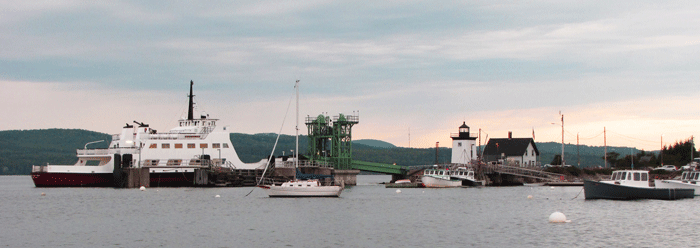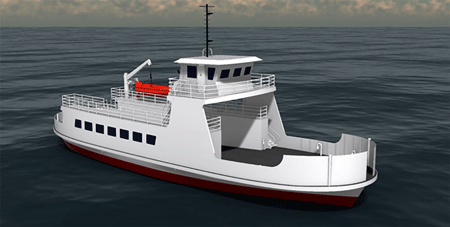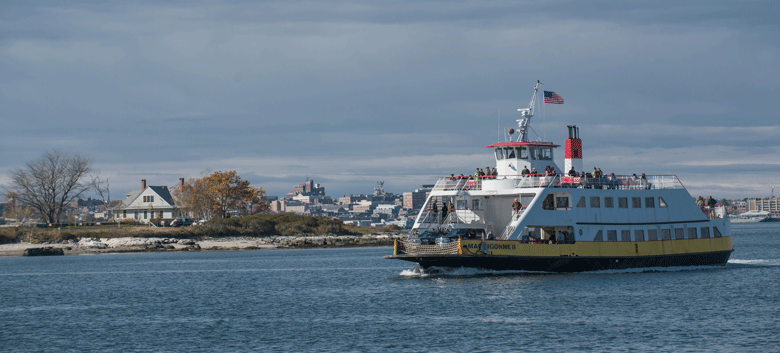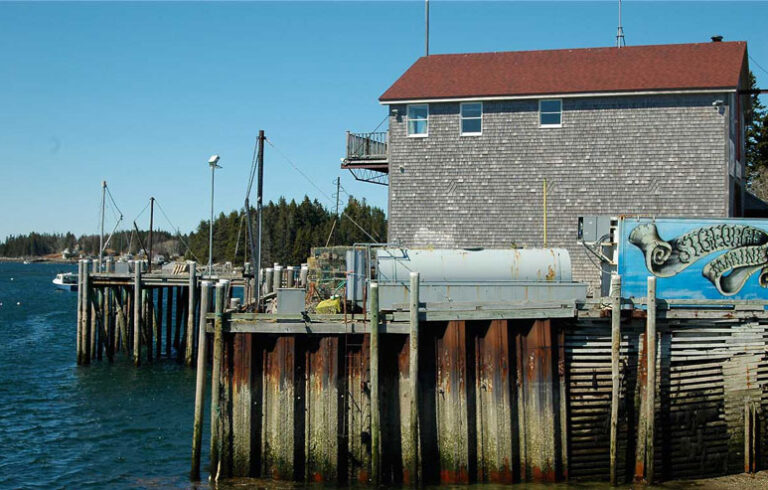
New ferries, the vital link between Maine islands and the mainland, are in the pipeline. In recent months, construction has started on ferries to serve Peaks Island in Casco Bay and Matinicus off Penobsot Bay, and funding has been earmarked for a vessel to serve Islesboro and for a second boat for Casco Bay.
Here are the details:
Machigonne II replacement, Peaks Island:
When officials at Casco Bay Lines first began considering replacing Machigonne II, the ferry for Peaks Island, they thought that hybrid technology was too risky to utilize for the vessel, according to Hank Berg, general manager for Casco Bay Lines.
“When we were starting off the process of replacing this vessel, we were very conservative,” Berg said. “We’re a lifeline to the islands, and we couldn’t insert risk into it.”
However, ferry officials subsequently learned that hybrid boat engine technology was already in mainstream use in Scandinavian countries. They also saw the technology being used successfully in the U.S., including for the Maid of the Mist tour boat at Niagara Falls. Both the ferry officials and Peaks Island residents came around to the idea that a hybrid-powered approach was the way to go for the new ferry.
“It’s often challenging to get islanders to agree on something,” Berg said. “They all agreed and were in favor of it.”
The new vessel, being constructed by Senesco Marine of North Kingston, R.I., will be powered by a diesel-electric hybrid propulsion system, with the electric component having a 900 kilowatt capacity. Projected to save 800 metric tons of CO2 annually, the ferry will charge at the Portland terminal using electrical infrastructure left over from a floating drydock last used by Bath Iron Works.
The ferry was designed by Elliot Bay Design Group in Seattle, and the propulsion system was designed by ABB, a global technology company.
Berg said this boat is part of a wave of hybrid-powered vessels being constructed in the U.S.
The ferry service received $16.3 million from the federal government and the state of Maine for the project. Casco Bay Lines also has received $3.6 million in funding to construct a hybrid-powered vessel to replace Maquoit II, a ferry serving Chebeague, Cliff, Great Diamond, Little Diamond, and Long islands.
The Margaret Chase Smith replacement, Islesboro:
Another hybrid ferry in the early stages of construction is the Margaret Chase Smith replacement. That vessel currently connects Islesboro and Lincolnville Beach, part of the Maine State Ferry Service.
In February, Sen. Susan Collins and Member of Congress Chellie Pingree announced that the Maine Department of Transportation will receive a $28 million grant from the federal government for the project.
That grant money comes from the Electric or Low-Emitting Ferry Pilot Program, which was created under the Bipartisan Infrastructure Bill. This sweeping law was enacted with the goals of modernizing public transportation in the U.S., improving the nation’s electric grid, and creating resilience in the face of climate change.
Everett Libby replacement, Matinicus:
At long last, Matinicus is getting a new ferry. The current ferry, Everett Libby, has been in service since 1960.
The new boat will still be a relatively compact vessel, like its predecessor, with a 104-foot steel hull. Bigger may be better for many boats in the Maine State Ferry Service, but not for Matinicus, according to longtime resident Eva Murray.
“Only a ‘short boat’ can serve Matinicus Island,” she said in a statement. “The other ferry vessels… cannot physically fit into Matinicus Harbor or access this wharf.”
The ferry has been designed by Gilbert Associates, and is being built by Steiner Shipyard in Alabama. Steiner built a ferry for Casco Bay Lines roughly 15 years ago, said Tara Steiner Marshall, the shipyard’s president. Much has changed to speed up the process of boatbuilding since then, she said. Computer modeling and design packages can make boatbuilding more efficient. However, boatbuilders now must contend with supply chain delays that weren’t common at the turn of the century.
“Normally, a boat like this would only take 14 to 16 months. However the engines are like 54 weeks out,” Steiner said.
The boat is scheduled to be in service in April 2024.






